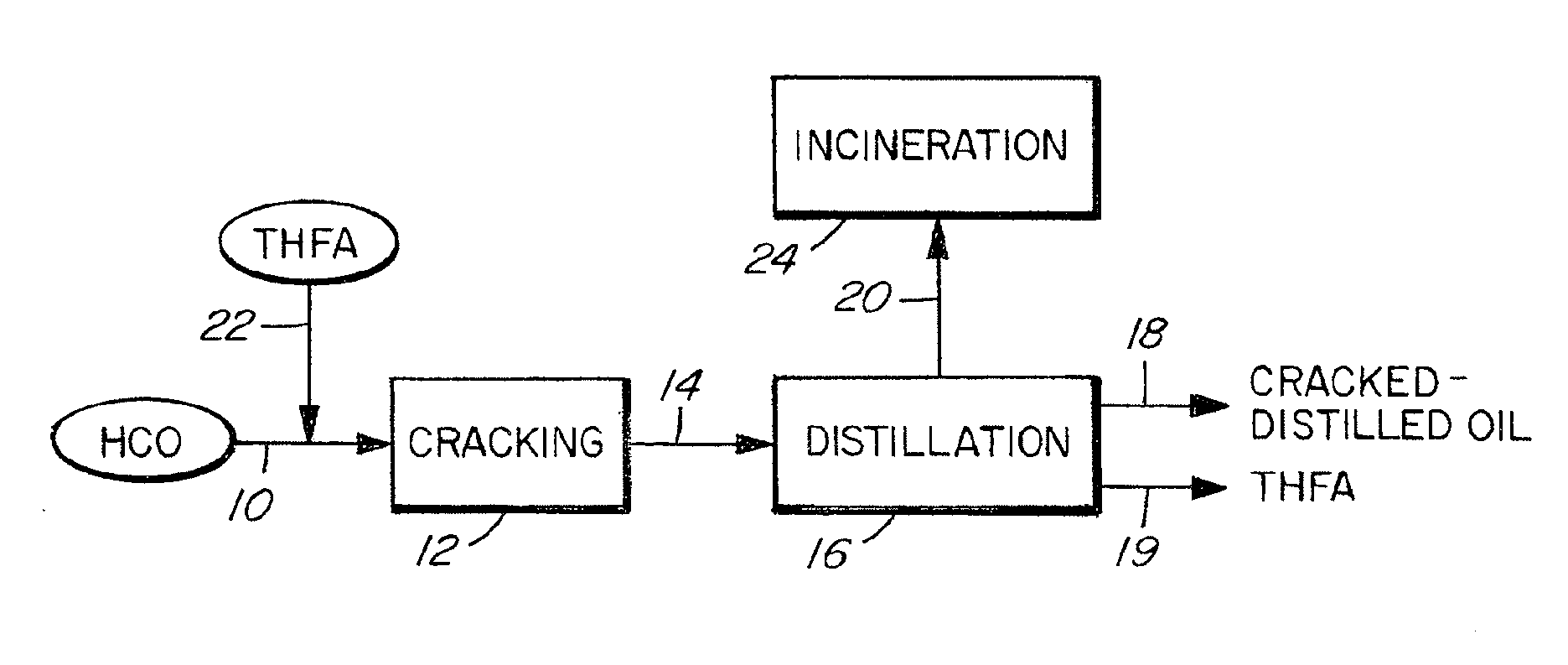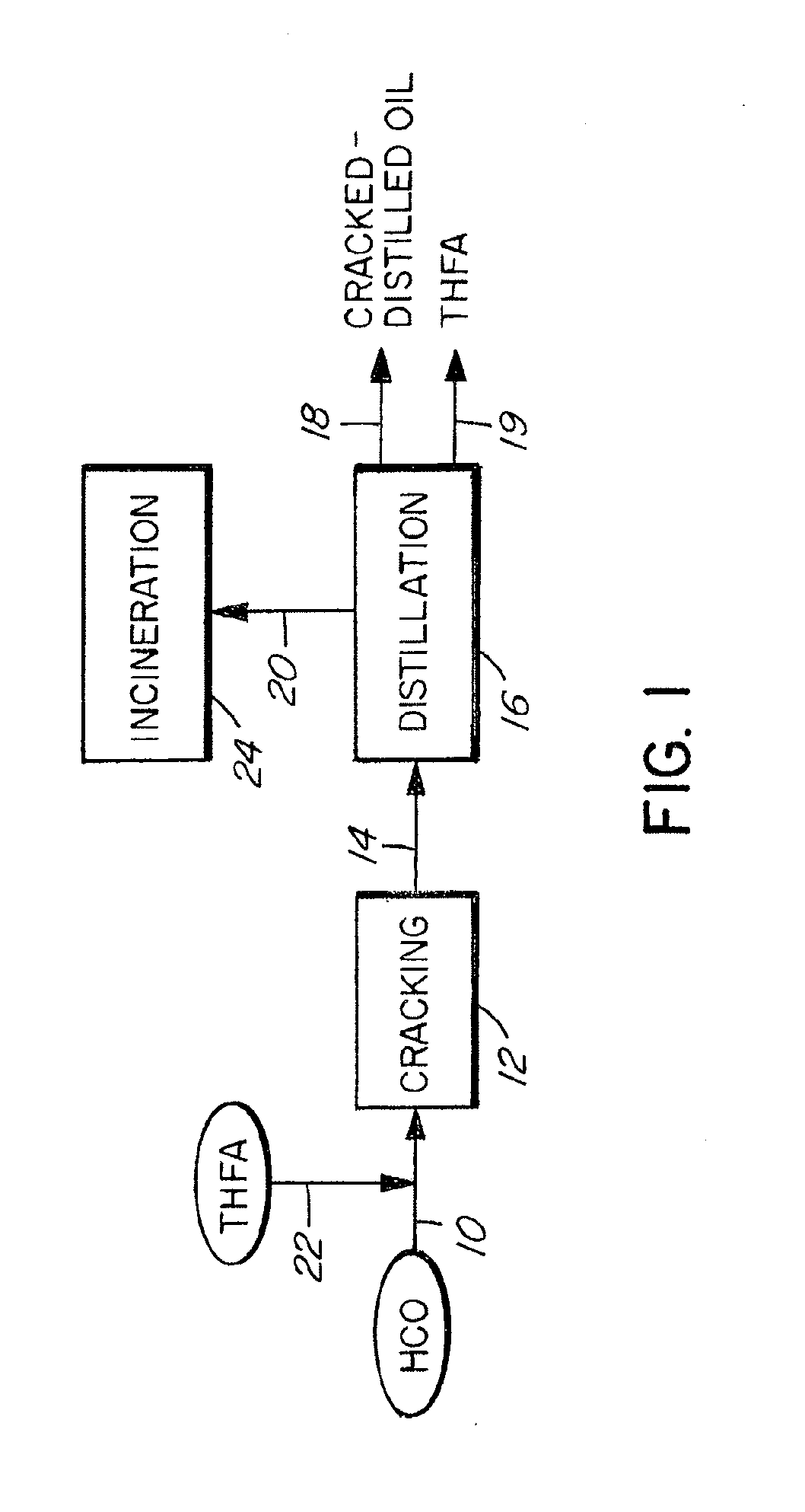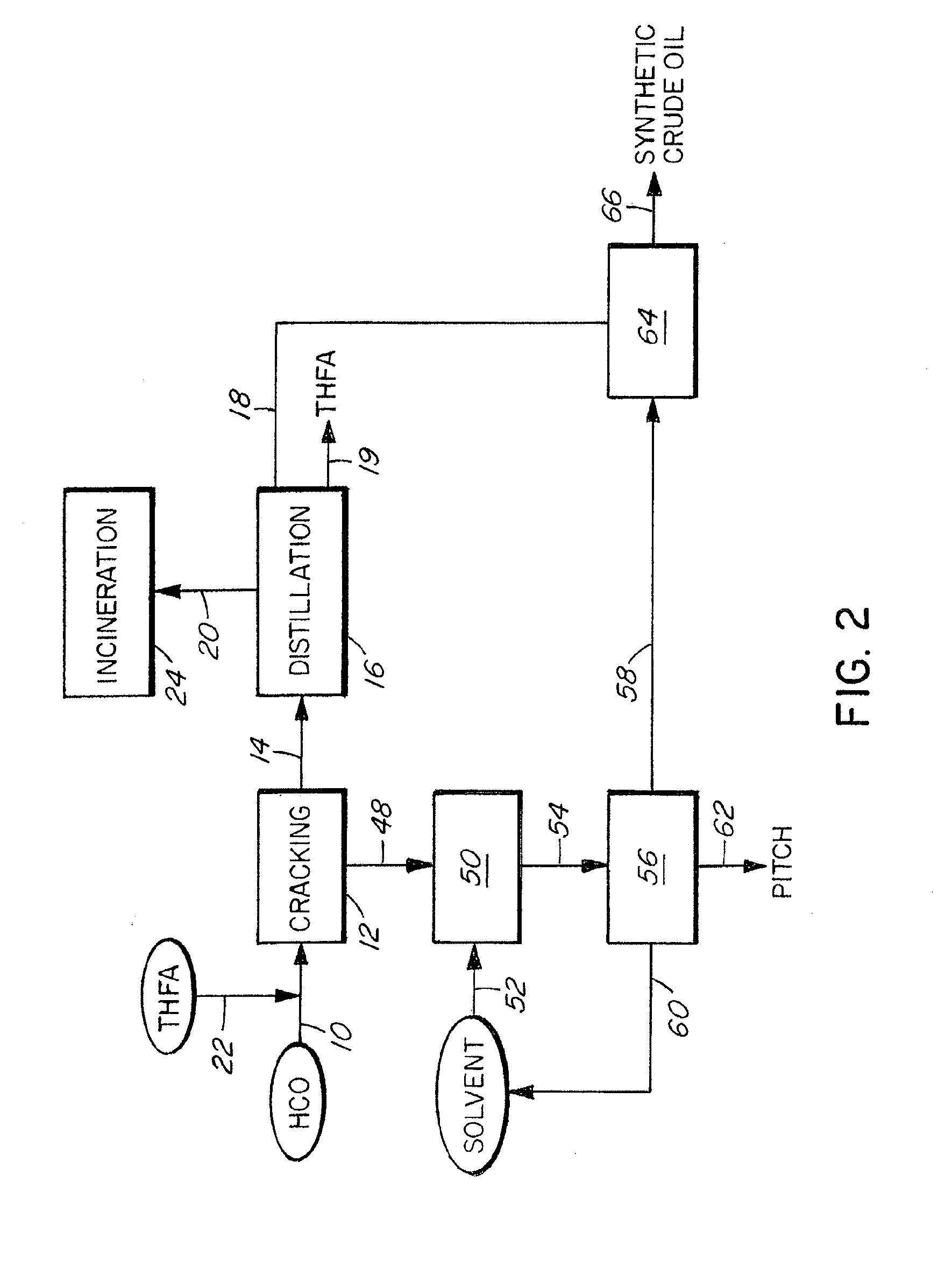Method of Upgrading Heavy Crude Oil
- Summary
- Abstract
- Description
- Claims
- Application Information
AI Technical Summary
Benefits of technology
Problems solved by technology
Method used
Image
Examples
example 1
Simultaneous Thermal Cracking and Distillation of Athabasca Bitumen with Sequential Solvent Deasphalting with and without THFA
[0061]Athabasca bitumen was subjected to three cracking and solvent deasphalting treatments:[0062]Run A: conventional visbreaking treatment;[0063]Run B: treated according to the present invention, without THFA;[0064]Run C: treated according to the present invention, with THFA.
[0065]Conventional visbreaking, Run A, was carried out in a pressurized, stirred stainless steel autoclave for 1050 seconds at an equivalent temperature of 410-412° C. The reaction product was cooled rapidly to room temperature and the resulting gas product was analyzed. Gas yield in weight % of the HCO feed was 13.6%. Although Run A may be distinguished from other visbreaking processes by its temperature and severity of the operation, for present purposes the severity of a process can be compared using the following equation:
θ875°F=60×exp[(Ea×1.81.987)(1875+840+17°F+460)]
Where: θ875° F....
example 2
Simultaneous Thermal Cracking and Distillation of Lloydminster Heavy Oil with and without THFA
[0079]Two samples of HCO from Lloydminster, Alberta, Canada, were heated for 2 hours at 150° C. followed by atmospheric pressure cracking-distillation, Sample 1 having 10 parts by weight THFA per 90 parts by weight HCO, and Sample 2 having no THFA. Sample 1 was aerated and stirred with a magnetic Teflon®-coated stirrer bar during the heating step prior to distillation. The THFA-HCO mixture was stirred during cracking-distillation. The samples were heated until excessive foaming occurred in the distillation apparatus. Cracking-distillation was carried out using the apparatus described in ASTM method D86, allowing continuous exhausting of volatile components that are not condensed by the water-cooled condenser. The initial and final boiling points for atmospheric pressure distillate (CDO) of Sample 2 were 143° C. and 342° C., respectively. The initial and final boiling points for the atmosphe...
example 3
Simultaneous Thermal Cracking and Distillation of Lloydminster Heavy Oil with and without THFA
[0091]Sample 3, having the same HCO used in Example 2, was cracked-distilled in similar fashion to Example 2 above, to determine the effect of THFA on distillate density (e.g. API gravity) and viscosity. Sample 3, consisting of a THFA-HCO mixture having 10 parts by weight THFA per 90 parts by weight HCO, was heated for 2 hours at 150° C. with aeration and stirring, followed by atmospheric pressure distillation. The results are as follows:[0092]201% increase in API gravity of Sample 3 CDO vs. undistilled HCO feed (i.e. API gravity of 9.3 for undistilled HCO feed vs. API gravity of 27.0 for Sample 3).[0093]99.9% reduction in viscosity of Sample 3 CDO vs. undistilled HCO feed (i.e. viscosity of 93 cp for Sample 3 vs. 82200 cp for undistilled HCO feed).
[0094]These results clearly show the value of adding high boiling point THFA alcohol-ether to HCO, especially high-sulphur HCO, (i.e. sour heavy...
PUM
 Login to View More
Login to View More Abstract
Description
Claims
Application Information
 Login to View More
Login to View More - R&D
- Intellectual Property
- Life Sciences
- Materials
- Tech Scout
- Unparalleled Data Quality
- Higher Quality Content
- 60% Fewer Hallucinations
Browse by: Latest US Patents, China's latest patents, Technical Efficacy Thesaurus, Application Domain, Technology Topic, Popular Technical Reports.
© 2025 PatSnap. All rights reserved.Legal|Privacy policy|Modern Slavery Act Transparency Statement|Sitemap|About US| Contact US: help@patsnap.com



